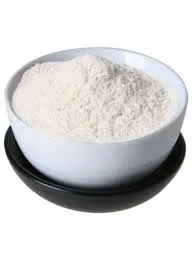
अगस्ट . 10, 2024 09:00 Back to list
Understanding HPMC Its Applications, Benefits, and Importance in Various Industries
Understanding HPMC What Is It and Its Applications
Hydroxypropyl Methylcellulose (HPMC) is a versatile compound derived from cellulose, a natural polymer. This water-soluble cellulose ether has gained prominence in various industries due to its unique properties and functional benefits. In this article, we will explore what HPMC is, its chemical structure, and its diverse applications in fields such as pharmaceuticals, food industry, and construction.
What is HPMC?
HPMC is a semi-synthetic polymer that is produced by modifying cellulose through a process that involves treating it with propylene oxide and methyl chloride. The result is a compound that retains many of the beneficial properties of cellulose while also being more soluble in water. HPMC has a chemical structure characterized by hydroxypropyl and methyl groups that enhance its solubility and thickening capabilities.
One of the key features of HPMC is its ability to form gels when mixed with water, which is particularly useful in various applications. Its properties can be tailored by altering the degree of substitution of hydroxypropyl and methyl groups, thus affecting both its solubility and viscosity.
Applications of HPMC
hpmc que es

1. Pharmaceuticals HPMC is widely employed in the pharmaceutical industry. It acts as a binder, thickener, and stabilizer in the formulation of tablets and capsules. Its ability to form controlled-release formulations makes it ideal for creating sustained-release drug delivery systems. HPMC can also be used as a film-forming agent in coatings for tablets, improving their stability and appearance.
2. Food Industry In the food sector, HPMC is used as a food additive, commonly designated as E464. It serves as a thickening agent, emulsifier, and stabilizer in products like sauces, ice creams, and baked goods. Its ability to retain moisture also helps improve the texture and freshness of food products. Moreover, it is favored for its low-calorie, gluten-free properties, making it a popular choice in health-conscious food formulations.
3. Construction HPMC is an essential ingredient in the construction industry, particularly in the production of mortars, adhesives, and plasters. It improves the workability and adhesion of these materials, allowing for better handling and application. Its water-retaining properties prevent rapid drying, which is crucial in ensuring the longevity and durability of construction materials.
4. Cosmetics and Personal Care HPMC finds its way into cosmetic products as a thickening agent and emulsifier. It enhances the texture of creams, lotions, and gels, providing a smooth application. Additionally, due to its film-forming capabilities, HPMC is often used in hair and skin care products to create a protective layer.
Conclusion
In conclusion, Hydroxypropyl Methylcellulose (HPMC) is a valuable compound with a plethora of applications across various industries. Its unique properties, such as water solubility, thickening ability, and adaptability, make it an indispensable ingredient in pharmaceuticals, food products, construction materials, and cosmetics. As research continues to explore its full potential, HPMC is likely to remain a staple in both innovative and traditional formulations, contributing to advancements in product development and enhancing functionality in various applications. Its versatility and efficacy make HPMC not just a compound of interest, but a fundamental component that underpins many modern products and industries.
-
Why HPMC is a Key Additive in Wall Putty Formulations
NewsAug.05,2025
-
Redispersible Powder in Decorative Renders: Function Meets Finish
NewsAug.05,2025
-
Redispersible Powder for Interior Wall Putty: Smooth Results Every Time
NewsAug.05,2025
-
HPMC’s Water Retention Capacity in Dry Mortar Applications
NewsAug.05,2025
-
HPMC Factory Contributions to Liquid Detergents
NewsAug.05,2025
-
How HPMC Factory Products Change Detergent Textures
NewsAug.05,2025







